- Automotive Components Manufacturers Association
- ACMA
- Shradha Suri Marwah
- Subros
- United States
- Liberation Day
- Donald Trump
Donald Trump’s Liberation Day Tariffs Does Not Cover Autos & Auto Parts Says ACMA
- By MT Bureau
- April 03, 2025
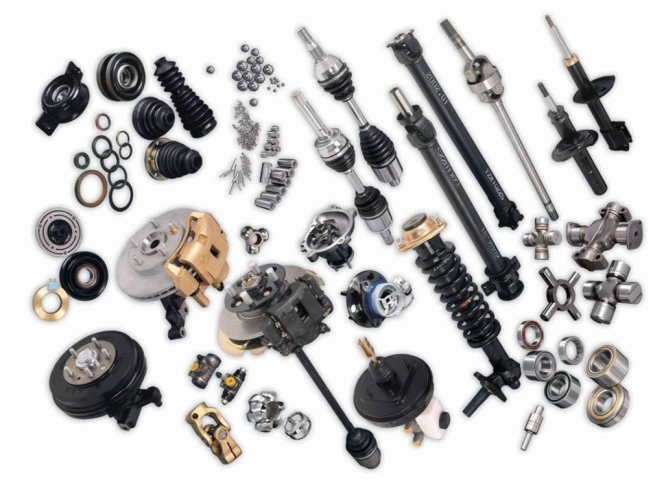
The United States President, Donald Trump, announced a new set of tariffs as part of its ‘Liberation Day’ initiative on 2 April 2025. This new rate of tariffs is part of Trump’s administration to boost national production and what he claimed is to resolve ‘trade imbalances.’
A statement issued by ACMA India mentioned that as per an order by Trump on 26 March 2025, Section 232 charges 25 percent tariffs, but there is no mention of ‘Autos & auto parts and steel & aluminium articles.’
The industry body stated that the detailed list of auto components that will be subject to 25 percent import tariff in the United States was awaited.
Rajesh Menon, Director General, SIAM, said, “Commenting on the recent announcement by US Govt on Reciprocal Tariffs, it is to be noted that autos are not covered in this order since they are already subject to Section 232 tariffs at 25 percent, announced earlier in President Trump’s order on March 26, 2025. We don't expect any significant impact on the Indian automobile industry since there are limited exports to US, but we will continue to monitor the situation."
Shradha Suri Marwah, President, ACMA and CMD, Subros, said, “ACMA remains hopeful that the ongoing bilateral negotiations between the Indian and U.S. governments will lead to a balanced resolution that benefits both economies. We believe that the strong trade relationship between India and the United States, especially in the auto components sector, will encourage continued dialogue to mitigate the impacts of these measures. ACMA is committed to engaging with all stakeholders to ensure the long-term interests of the Indian auto component industry.”
A statement from the White House mentioned that President Trump was working to level the playing field for American businesses and workers by confronting the unfair tariff disparities and non-tariff barriers imposed by other countries.
‘For generations, countries have taken advantage of the United States, tariffing us at higher rates. For example: The United States imposes a 2.5 percent tariff on passenger vehicle imports (with internal combustion engines), while the European Union (10 percent) and India (70 percent) impose much higher duties on the same product.’
For FY2024, India exported USD 6.79 billion worth of auto components, which translates to 27 percent of the total exports from India. On the other hand, India’s automotive component imports from the United States was valued at USD 1.63 billion or 7 percent of the total imports.
Saurabh Agarwal, Partner & Automotive Tax Leader at EY India, stated, “With US automotive tariffs rising, India's electric vehicle sector has a prime opportunity to capture a larger share of the US market, especially in the budget car segment. China's 2023 auto and component exports to the US stood at USD 17.99 billion, while India's were only USD 2.1 billion in 2024, highlighting the potential for growth. To accelerate this, the government should enhance the PLI scheme by including more auto components, opening it to new players, and extending it by two years."
Arun Agarwal, VP – Fundamental Research – Automobiles, Kotak Securities, said, “US has imposed 25 percent tariffs on imported cars, light trucks and select auto parts sourced from outside of North America. Further, almost 150 auto parts will face tariffs at similar rate. This move could result into increase in car prices in the US and cost pressure for component suppliers. In the event of car prices going up, the US car market may witness a steep volume decline and that can impact revenue for component players supplying parts to the US car/light truck industry. Further, margins of suppliers may come under pressure as they may need to partly absorb cost pressures. We believe there will be some impact, which the suppliers will have to bear, leading to negative implications on margins. Having said that, it needs to be seen on how higher tariffs are absorbed across the supply chain that includes customers, OEMs and suppliers. The extent of impact for Indian players will also depend on the US-India bilateral agreement over the next few months.”
- Greenfuel Energy Solutions
- Lumax Auto Technologies
- LATL
- Maruti Suzuki India
- CNG
- WEH Gas Tech
- Deepak Jain
- Anmol Jain
- Akshay Kashyap
Greenfuel Energy Solutions Starts Ferrule-less Tube Production In Manesar
- By MT Bureau
- December 22, 2025
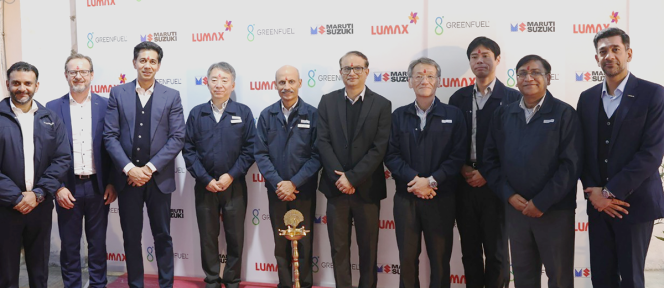
Greenfuel Energy Solutions, a subsidiary of Lumax Auto Technologies (LATL), has opened a manufacturing line for ferrule-less tubes and fittings at its Manesar facility. The line was inaugurated by the leadership team of Maruti Suzuki India.
The project involves an initial investment of INR 250 million, with a further INR 500 million planned over the next five years. The facility has the capacity to supply components for approximately 100,000 vehicles, with production ramping up in phases.
The facility localises the production of ferrule-less tubes and fittings for CNG vehicles, a technology that was previously imported. The solution uses torque-tightened assembly for mass production. Greenfuel developed the line in collaboration with its German partner, WEH Gas Tech, adapting the technology for Indian conditions.
Deepak Jain, Director, Lumax Auto Technologies, said, “The localisation of this technology reflects our strong commitment to the ‘Make in India’ agenda. By bringing critical manufacturing capabilities onshore, we are accelerating technology transfer, strengthening domestic supply chains, and enhancing India’s competitiveness in advanced automotive manufacturing.”
Anmol Jain, Managing Director, Lumax Auto Technologies, added, “This initiative lays the foundation for scalable and sustainable growth. It improves operational efficiencies, deepens collaboration with OEM partners, and enables faster validation cycles supporting the evolution of Indian manufacturing towards higher value-added capabilities.”
The transition to domestic manufacturing is intended to reduce reliance on global supply chains and eliminate costs associated with import duties and foreign-exchange exposure.
Akshay Kashyap, MD & CEO, Greenfuel Energy Solutions, said, “We are the first and only company in India to localise ferrule-less tubes and fittings along with the underlying manufacturing technology. This Make-in-India solution offers ease of installation, reduced labour costs, and enhanced safety for the automotive industry. We have already commenced supplies to a leading OEM and are witnessing strong interest from others.”
“This technology has been proven in Europe and used by an established German automotive brand for over seven years. We have successfully indigenised it in India in collaboration with our long-standing German partner, WEH Gas Tech, a relationship spanning nearly two decades. While the core line was sourced from Germany, it has been adapted and optimised for Indian operating conditions, combining global credibility with local engineering expertise,” added Kashyap.
In 2024, Lumax Auto Technologies Limited acquired a 60 percent stake in Greenfuel Energy Solutions’ alternate fuels business for INR 1.53 billion. The division reported revenues of INR 1.7 billion in the first half of the year and maintains an order book of approximately INR 2 billion. The expansion aligns with the industry-wide shift toward alternate-fuel platforms in India.
- Uno Minda
- ICSI National Awards
- The Institute of Company Secretaries of India
- Ministry of Corporate Affairs
- Dr Raj Bhushan Choudhary
- P T Usha
- D Y Chandrachud
- Tuhin Kanta Pandey
- Securities and Exchange Board of India
- SEBI
Uno Minda Receives ICSI National Award For Corporate Governance
- By MT Bureau
- December 22, 2025
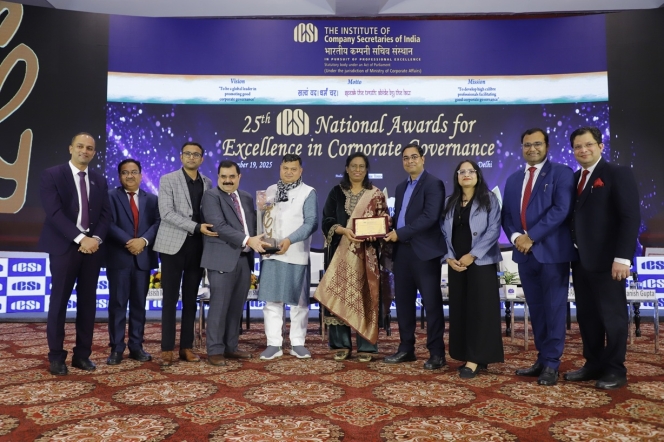
Tier 1 automotive component supplier Uno Minda has been named the ‘Best Governed Company’ at the 25th ICSI National Awards for Excellence in Corporate Governance. The company received the award in the Listed Segment (Medium Category) during a ceremony held on 19 December 2025.
The Institute of Company Secretaries of India (ICSI), a body under the Ministry of Corporate Affairs, recognised Uno Minda for its governance framework, Board structure and transparency. The evaluation also considered stakeholder value enhancement, CSR, and sustainability. The company treats governance as an enabler of growth and value creation.
The award was presented by Dr Raj Bhushan Choudhary, Minister of State for Jal Shakti, and P T Usha, Member of Parliament and President of the Indian Olympic Association.
The jury for the awards was chaired by Dr Justice D Y Chandrachud, former Chief Justice of India. Tuhin Kanta Pandey, Chairman of the Securities and Exchange Board of India (SEBI), attended the event as Guest of Honour.
This recognition follows other governance awards received by the company. Uno Minda was previously granted the ‘Amrop–ET India’s Best Board’ Award in 2021 for Board effectiveness and leadership. It also received the Golden Peacock Award for Excellence in Corporate Governance in 2020 from the Institute of Directors.
The ICSI National Awards are intended to promote governance standards that support the socio-economic objectives of the Government of India.
Honda Increases Stake In Astemo To Drive Software Development
- By MT Bureau
- December 17, 2025

Honda Motor Co., and Hitachi have signed an agreement for Hitachi to transfer a portion of its common shares in automotive component supplier Astemo to Honda.
The transaction shifts the voting rights of the joint venture. Previously held at a 40–40 percent split between Honda and Hitachi, with 20 percent held by JICC-01, the new structure grants Honda a 61 percent majority stake. Hitachi’s share will decrease to 19 percent, while JICC-01 maintains its 20 percent holding.
The capital restructure aims to position Astemo as a provider of integrated vehicle systems for the Software Defined Vehicle (SDV) era. The company intends to integrate software and hardware across in-car domains and cloud engineering.
Under the new arrangement, Astemo will increase collaboration with Honda to utilise the automaker’s development expertise. Hitachi will continue to provide support focused on digital technology to assist in AI and software development.
The company confirmed its intent to pursue an Initial Public Offering (IPO) while focusing on the electrification of mobility and AI-driven intelligence.
"Under the new capital structure, Astemo will accelerate its efforts more than ever, aiming to become a company that leads the electrification of mobility and AI-driven intelligence in the SDV age. As a system solution provider that offers not just individual components but software-defined integrated vehicle systems, Astemo aims to be a leading company that drives electrification and AI-driven intelligence of mobility in the SDV age, challenging itself to achieve further growth," said Astemo in a statement.
At present, Astemo has over 80,000 employees globally and operates across the Americas, Asia, Europe and Japan, managing divisions for electrification, vehicles and motorcycles.
ACMA Mobility Foundation And Spark Minda Host Technology Showcase
- By MT Bureau
- December 17, 2025
The ACMA Mobility Foundation and Spark Minda Group recently held the Spark Connect Tech Show, which aimed to increase visibility and capability development for Tier-2 and Tier-3 suppliers within the automotive supply chain.
The initiative involved 25 supplier partners representing a shift in ACMA’s technology engagement, moving from OEM-led events to Tier-1-hosted platforms. This format allowed suppliers to present solutions directly to Tier-1 and OEM functions.
Vinnie Mehta, Director General, ACMA, stated, “While ACMA organises several large exhibitions and international events, targeted technology shows such as these play a distinct role in supporting individual companies. They enable direct engagement between OEMs, Tier-1s and supplier partners, and provide valuable, specific feedback from engineering, R&D and procurement teams. This kind of engagement is critical as we work to strengthen Tier-2 capabilities and build a more competitive automotive ecosystem.”
Aakash Minda, Executive Director, Spark Minda Group and Chairperson, Supply Chain & Raw Materials Pillar, ACMA, added, “Through our collaboration with the ACMA Mobility Foundation on initiatives such as the Spark Connect Tech Show, we are working to improve visibility and access for Tier-2 and Tier-3 supplier partners across Tier-1s and OEMs. These buyer-seller engagements provide an opportunity for suppliers to showcase their capabilities and explore potential collaboration and business opportunities within the automotive value chain.”
The Spark Connect Tech Show is part of the ACMA Mobility Foundation’s work to deepen supply-chain integration. The foundation focuses on the development of the automotive components ecosystem.



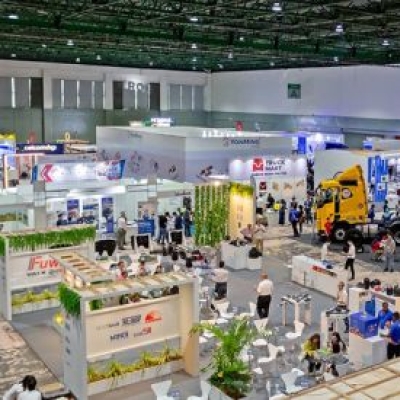
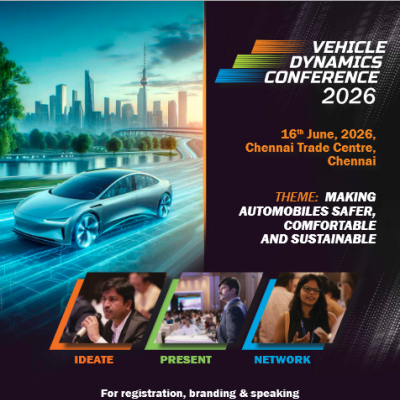

Comments (0)
ADD COMMENT